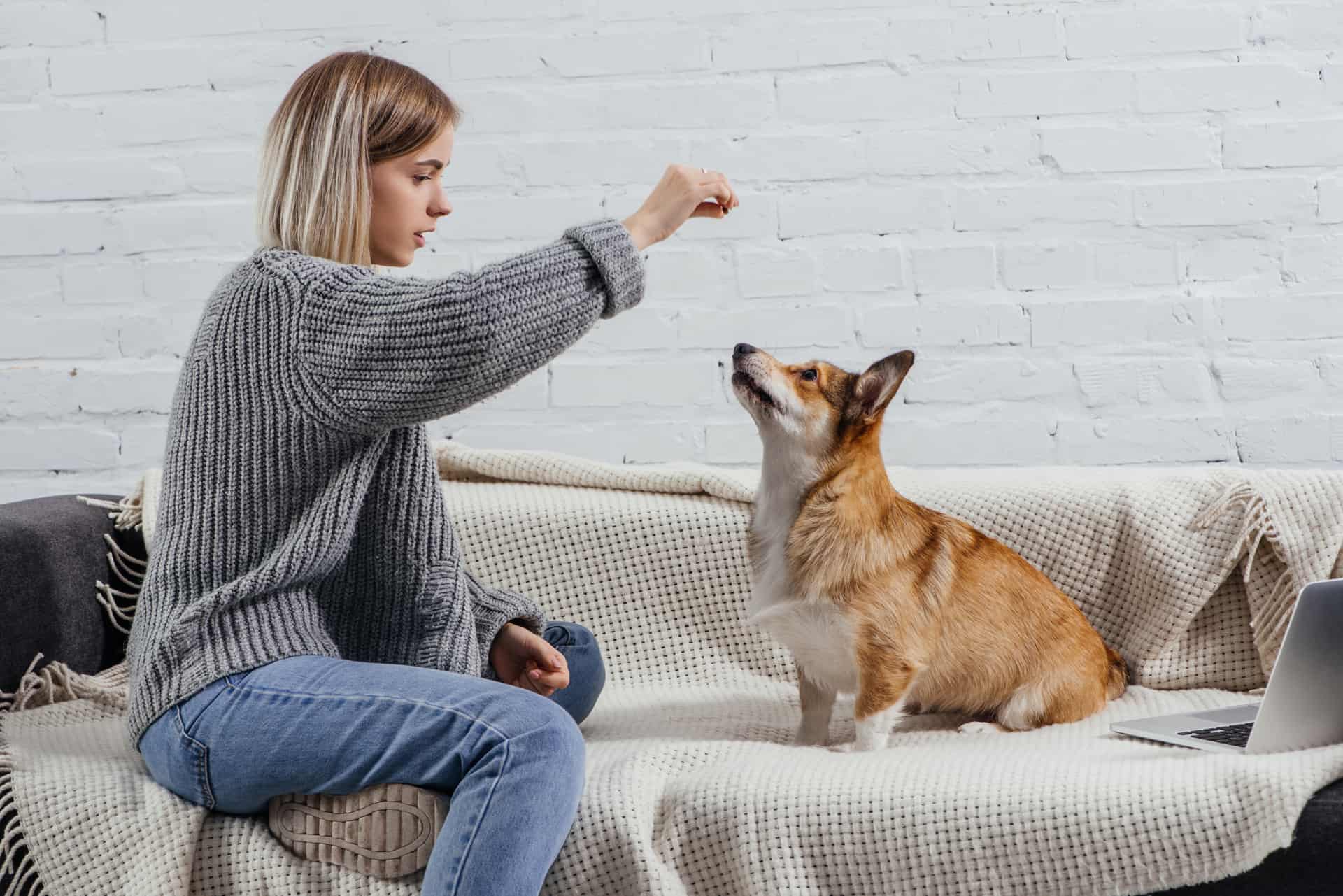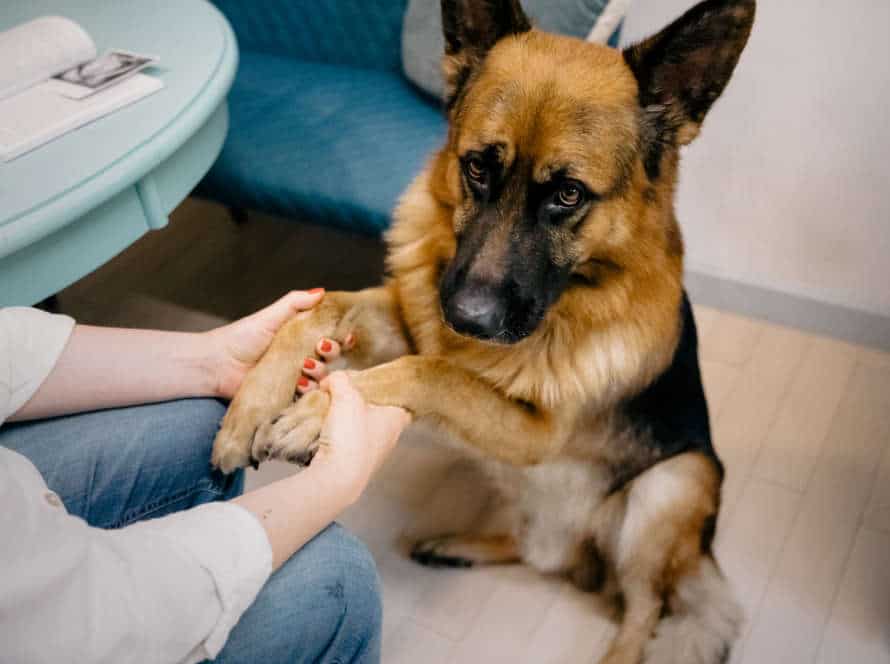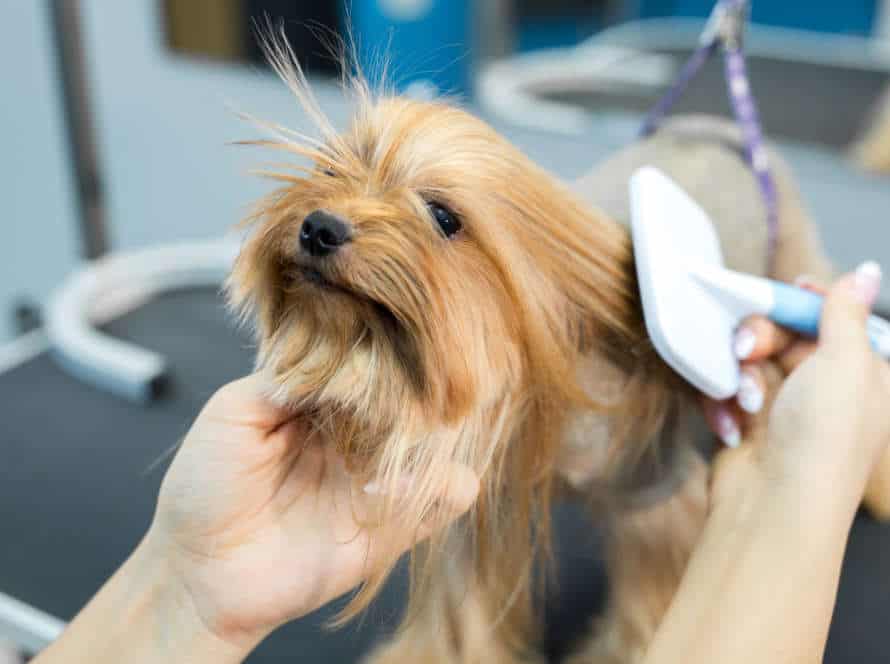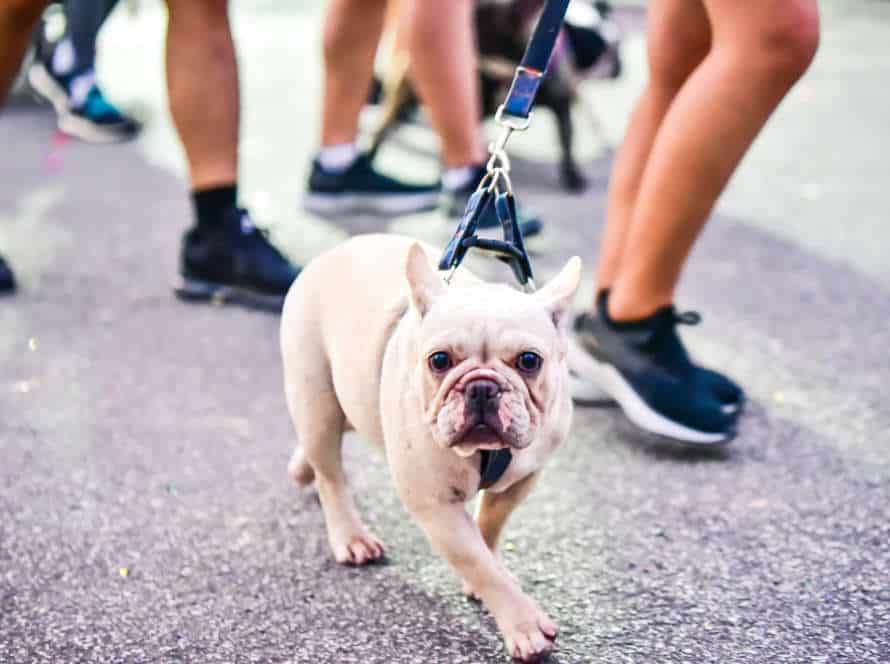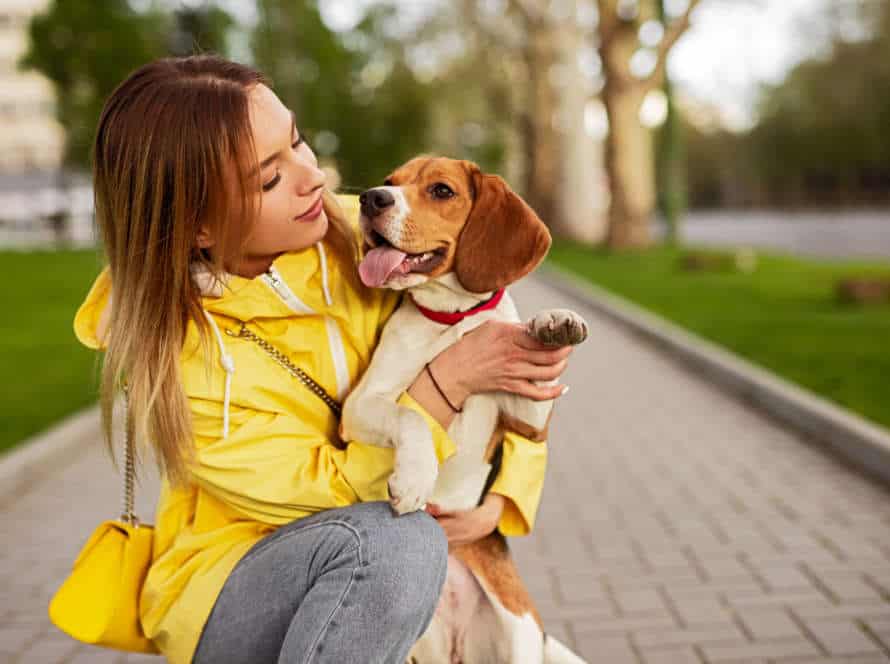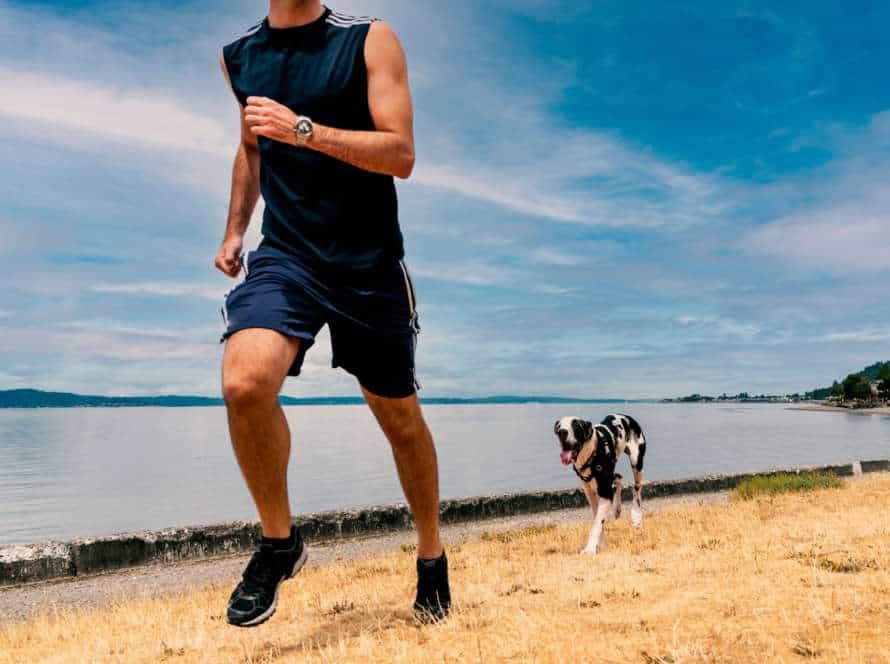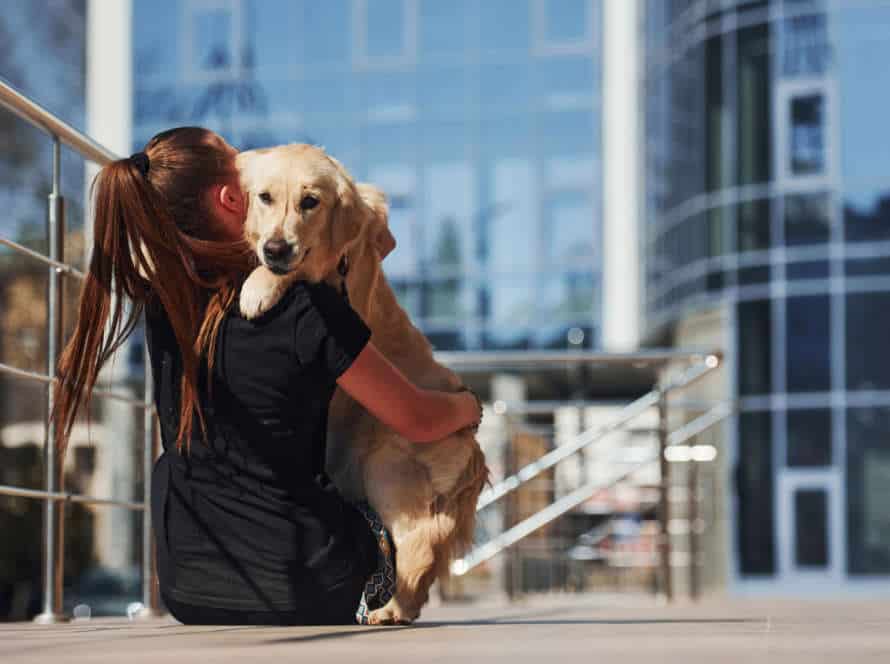Positive Reinforcement: The Key to Successful Dog Training
Positive reinforcement is a great tool for training your pup! Instead of punishing bad behavior, reward the good! Here’s why it works so well:
- It builds trust and strengthens the bond between you and your pup.
- It creates a positive and rewarding experience for them, increasing their chance of repeating the behavior.
- It is a humane and ethical way to train, without physical punishment or intimidation.
Positive reinforcement can be used for many behaviors! Simple rewards like treats or praise can make a real difference in your pup’s behavior and mood. So, next time you’re training your pup, remember: Positive reinforcement is the key to success.
Pro tip: Be consistent with rewards and timing. Always give your pup their reward right after the desired behavior, and use the same reward each time.
Understanding Positive Reinforcement
Comprehending positive reinforcement is basic for successful dog training. It is an effectual method of teaching your pup wanted behaviors. Reward them for their good behavior and overlook bad behavior. Positive reinforcement not only aids in teaching new behaviors, but also helps build the bond between you and your furry friend. Let’s review the basics of positive reinforcement and how it functions.
Definition of Positive Reinforcement
Positive reinforcement is a great technique for training your pup! When they do something good, like sit, stay, or come when called, give them a reward. This could be in the form of praise, a treat, or a toy.
It works because of something called operant conditioning; when an action is rewarded, it’s more likely to be repeated.
Positive reinforcement is an awesome way to communicate with your pup and build a strong bond. It’s gentle and kind, and can be used for anything from basic commands to more complex tasks. Fetching, agility training – you name it!
How Positive Reinforcement Works in Dog Training
Positive reinforcement is a safe and humane way to train your pup. It involves giving rewards like treats or praise when they show good behavior. This teaches them to link good behavior with positive results. You can use it to train your dog to do tricks, walk on a leash, and obey commands.
Studies suggest that dogs trained this way have stronger bonds with their owners and less fear and anxiety.
Pro tip: Give the reward straight away for the best results.
Benefits of Using Positive Reinforcement
Positive Reinforcement is a great technique for teaching dogs. It has many advantages over traditional methods that use punishment and negative reinforcement. Here’s why:
- It builds a good relationship – Positive Reinforcement helps you and your pup form trust. This is important for successful training.
- Improves obedience – When rewarded for good behavior, dogs are more likely to follow instructions.
- Enhances confidence – Positive Reinforcement boosts a dog’s confidence. This makes them more willing to try new things.
- Reduces stress – Dogs trained with Positive Reinforcement are less likely to have anxiety and fear-based behavior problems.
By understanding Positive Reinforcement and using it in your training, you can raise a happy, well-behaved, and confident pup!
Implementing Positive Reinforcement Techniques
Positive reinforcement is an absolute must for successful pup training! It promotes the wanted behaviors and encourages dogs to do them again. There are plenty of helpful techniques to teach a pooch new tricks or upgrade current ones.
Let’s check out all the positive reinforcement techniques available!
Clicker Training and Rewards
Clicker training and rewards are great tools for teaching dogs. Clicker training marks desired behaviors and communicates with the dog that they’ve done something right.
To use this method:
- Choose the behavior you want your pup to know.
- When they show it, click the clicker and give a treat right away.
- Repeat this a few times so they understand the clicker means a reward.
- Little by little, give fewer treats, but more desired behaviors, before giving one.
Pro tip: Use tiny, high-value treats to get your pup excited and willing to learn.
Treat Training and Rewards
Treats & rewards are key for positive reinforcement dog training. Use “high-value” rewards your pup loves, like small pieces of meat & cheese.
Consistently give the reward & pair it with a verbal cue, like “good boy“.
Avoid punishment or negative reinforcement.
Be patient & consistent & your pup will learn good behavior = positive rewards.
Verbal Praise and Rewards
Verbal praise and rewards are powerful tools for successful dog training. Here’s how to use them:
- When your pup does what you want, give quick verbal praise– like “good boy” or “good girl“.
- Follow it up with a treat or toy.
- Be consistent. Praise and reward them each time they do the right thing– no matter how small.
- Don’t use verbal or physical punishment– it can make training scary.
- Positive reinforcement techniques, like verbal praise and rewards, make training sessions more fun for you and your pup!
Positive Reinforcement Tips and Best Practices
Positive reinforcement is an awesome way to train dogs! It helps you and your pup build a strong bond. You do this by giving rewards and compliments for good behavior. What kind of rewards? Read on! We’ll share some tips and tricks for successful positive reinforcement dog training.
Timing is Everything
Timing is essential when it comes to positive reinforcement for dog training. The timing between the behavior and the reward affects the success of positive reinforcement. A few tips:
- Always have treats ready: Have rewards ready to give your dog right after they show the desired behavior. This strengthens the connection between the behavior and reward.
- Be consistent: Give your dog a treat each time they show the preferable behavior, not just sometimes. Consistency will help your dog know what behavior earns the reward.
Remember, positive reinforcement is a powerful tool for dog training. Time it right for best results.
Keep It Consistent
Consistency is the key to success in dog training. Positive reinforcement is an awesome way to encourage good behavior. Here are some hints to maintain consistency:
- Use the same tone and commands when talking to your pup.
- Give treats, praise and attention right away when they do something good.
- Make sure you don’t reward bad behavior, as it will only confuse them.
- Set up a regular routine for meals, sleeping and exercising.
By staying consistent and using positive reinforcement, your pup will learn good habits over time.
Avoid Punishment-Based Techniques
Punishment-based techniques in dog training are not good. Instead, use positive reinforcement! Here are tips:
- Give treats, praise and play when your pup does something right.
- Use a clicker or say “yes” to show when they did something correct.
- Be consistent and use positive reinforcement every time.
- Don’t do physical punishment or shout. It can make your dog scared and aggressive.
- Set achievable goals and focus on 1 behavior at a time.
Training should be fun for you and your pup. Positive reinforcement motivates and rewards your furry pal and makes your bond stronger.
Examples of Successful Positive Reinforcement Training
Positive reinforcement is becoming more popular with pet owners. It creates an atmosphere where your pooch feels safe, strong and in control. This training rewards good behaviour, making it a habit. Now, let’s look at some examples of how positive reinforcement dog training has been successful. Impressive outcomes ensued!
House Training a Puppy with Positive Reinforcement
Positive reinforcement is a great way to house train your puppy! It helps build your bond with them, and teaches them good habits. Here are some tips for successful positive reinforcement:
- Treats – Give them small treats when they behave well during house training, like going potty in the right place.
- Praise – Give them lots of verbal praise, in an upbeat and happy tone.
- Playtime – Use toys and games to reinforce good behavior.
- Consistency – Use the same commands and rewards every time they do something right.
Remember, positive reinforcement is essential for successful training. It makes your puppy feel loved and confident while they learn important skills.
Teaching Basic Commands with Positive Reinforcement
Positive reinforcement is a great way to train your pup. You reward good behaviour with treats and praise. Here are some of the techniques you can use:
- Clicker Training: Use a clicker to signal your dog when they do something right, then give them a treat. It’s great for teaching commands like “sit” and “stay”.
- Treat Training: Give your pup a treat when they do good things like coming on command or walking without tugging. Keep treats small and healthy to avoid overfeeding.
- Praise Training: Verbally praise your pup when they show good behaviour. Great for teaching commands like “come” and “heel”.
Be patient, consistent and gentle when training. It takes time, effort and consistency. Pro Tip: Start when your pup is still a baby for better results!
Overcoming Behavioral Issues with Positive Reinforcement
Positive reinforcement is a great way to correct doggy behavior. Instead of punishing or scolding, you reward good behavior and ignore bad behavior. Here are some examples:
- Clicker Training: Use a clicker to mark desirable behavior right away, then give a treat. The pup will associate the click with a treat and do that behavior more often.
- Treat Rewards: Give yummy treats like dog biscuits, cheese, or chicken when pup does something good.
- Verbal Praise: Dogs love positive affirmations like “good boy” or “well done“.
- Playtime: Playtime can be a great reward for good behavior. Plus, it helps burn off energy!
Remember to be consistent, quick, and effective with positive reinforcement. Pro Tip: Learn about dog behavior and body language to train them even better.
Frequently Asked Questions
1. What is positive reinforcement in dog training?
Positive reinforcement in dog training involves rewarding desirable behavior, such as sitting or staying, with treats, toys or praise. This method encourages dogs to repeat the behavior for the reward.
2. Why is positive reinforcement effective in dog training?
Positive reinforcement is effective in dog training because it focuses on rewarding desirable behavior rather than punishing undesirable behavior. This method creates a positive association with the behavior and encourages dogs to continue it in the future.
3. Can positive reinforcement be used for all types of dogs?
Yes, positive reinforcement can be used for all types of dogs regardless of breed, age or size. It is a gentle and effective method that can be tailored to each individual dog’s needs and personality.
4. How long does it take to see results with positive reinforcement?
The time it takes to see results with positive reinforcement varies depending on the dog and the behavior being trained. However, with consistency and patience, most dogs will start showing improvement within a few weeks.
5. Can positive reinforcement be used in combination with other training methods?
Yes, positive reinforcement can be used in combination with other training methods. However, it is important to avoid using punishing methods, such as shock collars or physical corrections, as they can be harmful and counterproductive.
6. Can positive reinforcement be used for correcting bad behavior?
Positive reinforcement can be used for correcting bad behavior by focusing on rewarding the opposite desirable behavior instead. For example, if a dog is jumping on people, the desirable behavior to reward would be sitting calmly instead.

